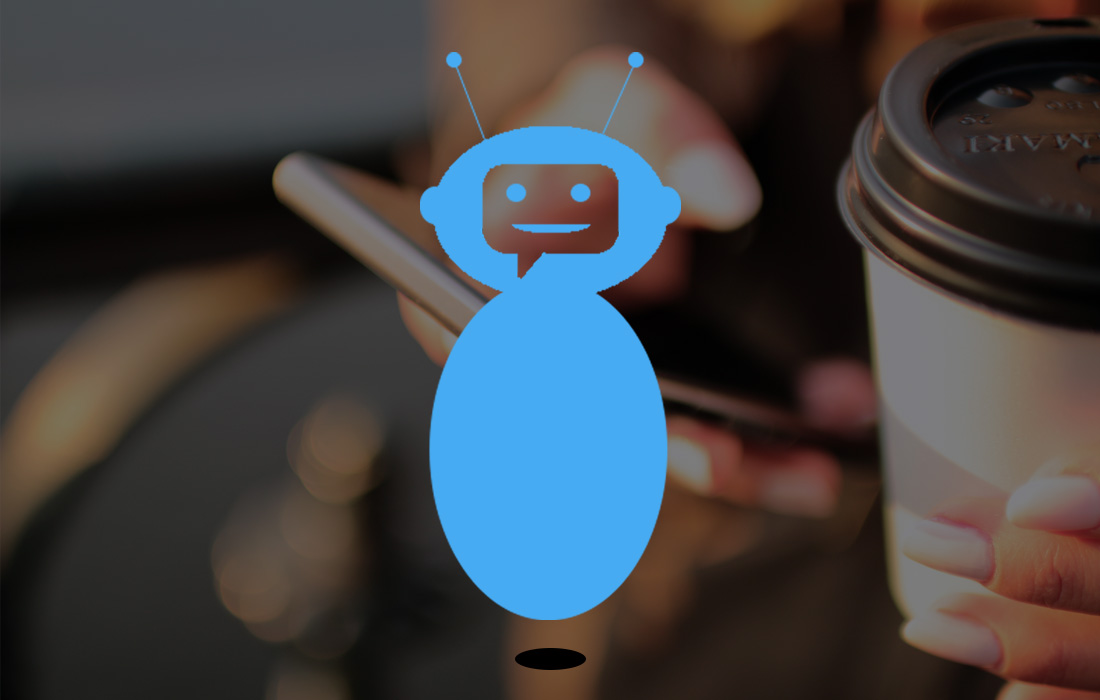Are you interested in a personal shopper or the status of your pizza? By asking just this single question. Name it and there is probably already a working chatbot that can assist you. But how does this work? And how will chatbots affect your future?
It is almost your mothers’ birthday. You are surfing through the web. You are clicking on several websites because you are searching for the perfect present to give her. You know your mother’s favourite colour is purple, so you decide to search on that criteria. There it already pops up, a chat window in which Alice asks if she could help you. You ask your question, you receive some suggestions and decide to choose the purple vase. Alice continuous to ask if you want to buy the product. You decide to buy it, so she arranges the sending and payment details with you. You are satisfied that you found the perfect gift and that Alice was able to help you so quickly. But wait, are you sure that Alice was a human agent? Nowadays, it is getting more and more inevitable that this was not a human agent, but a chatbot that was helping you. You were “fooled” in thinking Alice was a human agent. But is this a problem? You received the assistance you needed, right?
Artificial Intelligence
It is inevitable that Artificial Intelligence (AI) will infiltrate businesses, although it is currently still difficult [1]. A previous article about conversational systems mentioned the rising trend in AI and possible future possibilities [2]. As Cearley, VP and Fellow at Gartner, stated for technological trends in 2018: “Enterprises should focus on business results enabled by applications that exploit narrow AI technologies and leave general AI to the researchers and science fiction writers” [3]. Therefore, this article will focus on a specific AI designed application, a chatbot.
How do chatbots work?
To start with the basics. A chatbot is an intelligent agent that fools the human in thinking it is responding with another human. This intelligent software agent is activated by Natural Language Processing (NLP)[4]. NLP is used to build natural language models. This requires an extensive knowledge base with possible questions and answers. A chatbot can also communicate with different systems by making use of an Application Programming Interface (API)[5].
Besides the basics, the AI-driven chatbot is embedded with Machine Learning. This includes the ability of the chatbot to learn and develop over time from past experiences. As a result, a chatbot can improve and extend her knowledge base [6]. A chatbot can be deployed with several measurement factors to measure efficiency, effectiveness and satisfaction. Furthermore, a chatbot can occur as text-controlled, voice-controlled or both. She can be integrated in messaging platforms or on your website, for example [1], [4].
Internal Use and B2B
To improve internal business processes, chatbots are mainly deployed at the HRM and financial department. A chatbot can answer questions about payments, for example. Besides, she can be beneficial for the vendor and supplier activities. She can provide information about invoices. Moreover, she undertakes simple tasks that contribute to time scheduling, logging sickness and reduces the email load which helps saving time and money. As a result, a chatbot leaves room for human agents to focus on other more important duties [1].
Customer Service
Enhanced customer service is the mostform of using a chatbot. Customers do not have to phone or email the business anymore. Instead they are able to get all the information they need from a chatbot. They can even schedule appointments or shop with the use of a chatbot. KLM has already been investing in chatbots. They operate with an interlinked chatbot, named BlueBot in Facebook Messenger [7]. Besides it is possible to pack your luggage with use of google home, a voice-controlled chatbot. For inspiration see the video below [8].
As practice shows, most chatbots are not so advanced and customers easily notice that they are talking to a robot. Therefore, most companies choose a hybrid variant for the chatbot, where a human agent can always intervene the conversation when a chatbot stalls [7].
BadBots
Although, a chatbot sounds promising. There is also a contradiction to the use of a chatbot. Since she is taught to learn from previous experiences, she can also learn that bad events were good. She cannot distinguish between what is right and wrong and will accept recognized and taught behaviour. Furthermore, a chatbot can internally be used to enhance internal process, however, she can be programmed to have a malicious purpose as well. For example, to infiltrate other systems [9].
What will the future bring?
Like apps that are designed for basically everything you need, chatbots will also follow this path. A lot of tools in the market ensure that a working chatbot can be built in minutes. Therefore, chatbots will mature by experimenting and will gain more human traits. This brings two main challenges. First, this new way of interacting requires a new design for the current environment. Second, scenarios should be made for increased performance and the most profitable business model. Research shows that if the chatbot has been given a personality, it has been more successful in terms of engaging users and used topics. Additionally, chatbots will not only function as a messaging platform, but the extended use provides you with more information on your Smart TV or fridge, for example [10], [11]. Moreover, the context of conversations is becoming increasingly important as a human aspect. This will become the biggest development for 2018 [11], [12]. When a chatbot can place conversations in context, she gets to know you better and better. Maybe she can even become your best friend? Would you be open for that?
So, what do you think, can a chatbot benefit your life?
[1] M. Newlands, “How Enterprise Chatbot Platforms And AI Are Fundamentally Changing The Way We Do Business,” Forbes, 2017. [Online]. Available: https://www.forbes.com/sites/mnewlands/2017/06/29/how-enterprise-chatbot-platforms-and-ai-are-fundamentally-changing-the-way-we-do-business/#1193ee1b7a28. [Accessed: 17-Jan-2018].
[2] T. Oerlemans, “Impact of Conversational Systems on the future of business,” IThappens.nu, 2017. [Online]. Available: https://www.ithappens.nu/impact-conversational-systems-future-business/. [Accessed: 17-Jan-2018].
[3] K. Panetta, “Gartner Top 10 Strategic Technology Trends for 2018,” Gartner, 2017. [Online]. Available: https://www.gartner.com/smarterwithgartner/gartner-top-10-strategic-technology-trends-for-2018/. [Accessed: 17-Jan-2018].
[4] N. Radziwill and M. Benton, “Evaluating Quality of Chatbots and Intelligent Conversational Agents,” Softw. Qual. Prof., vol. 19, no. 3, pp. 25–36, 2017.
[5] H. Chen, R. H. L. Chiang, and V. C. Storey, “Business Intelligence and Analytics: From Big Data to Big Impact,” MIS Q., vol. 36, no. 4, pp. 1165–1188, 2012.
[6] H. J. Watson, “Preparing for the Cognitive Generation of Decision Support,” MIS Q. Exec., vol. 16, no. 3, pp. 153–170, 2017.
[7] J. Jansen, “KLM laat bots antwoorden formuleren op helft van klantvragen op social media,” Tweakers, 2017. [Online]. Available: https://tweakers.net/nieuws/133099/klm-laat-bots-antwoorden-formuleren-op-helft-van-klantvragen-op-social-media.html. [Accessed: 17-Jan-2018].
[8] “KLM helps you packing with voice-driven assistant on Google Home,” KLM, 2017. [Online]. Available: https://news.klm.com/klm-helps-you-packing-with-voice-driven-assistant-on-google-home/. [Accessed: 17-Jan-2018].
[9] “Bad Bots,” BotReports, 2014. [Online]. Available: http://www.botreports.com/badbots/index.shtml. [Accessed: 17-Jan-2018].
[10] R. Kar and I. Rishin Haldar, “Applying Chatbots to the Internet of Things: Opportunities and Architectural Elements,” IJACSA) Int. J. Adv. Comput. Sci. Appl., vol. 7, no. 11, 2016.
[11] J. Martín, “Chatbot Design Trends 2018,” Chatbots Magazine, 2017. [Online]. Available: https://chatbotsmagazine.com/chatbot-design-trends-2018-253fb356d3a3. [Accessed: 18-Jan-2018].
[12] G. Cronin, “Context Is King — Creating Intelligent Conversations for Chatbots,” Chatbots Magazine, 2018. [Online]. Available: https://chatbotsmagazine.com/context-is-king-creating-intelligent-conversations-for-chatbots-9372bd6c2ca4. [Accessed: 01-Mar-2018].




